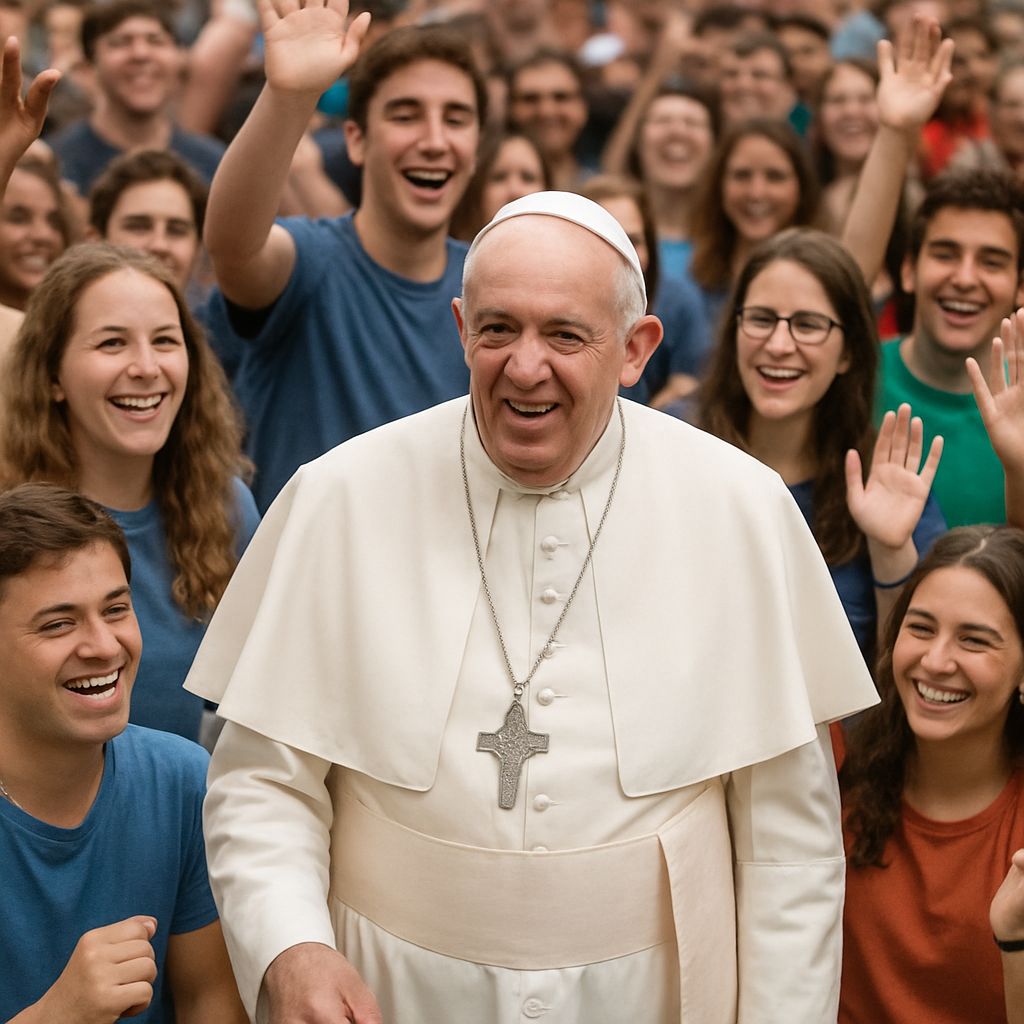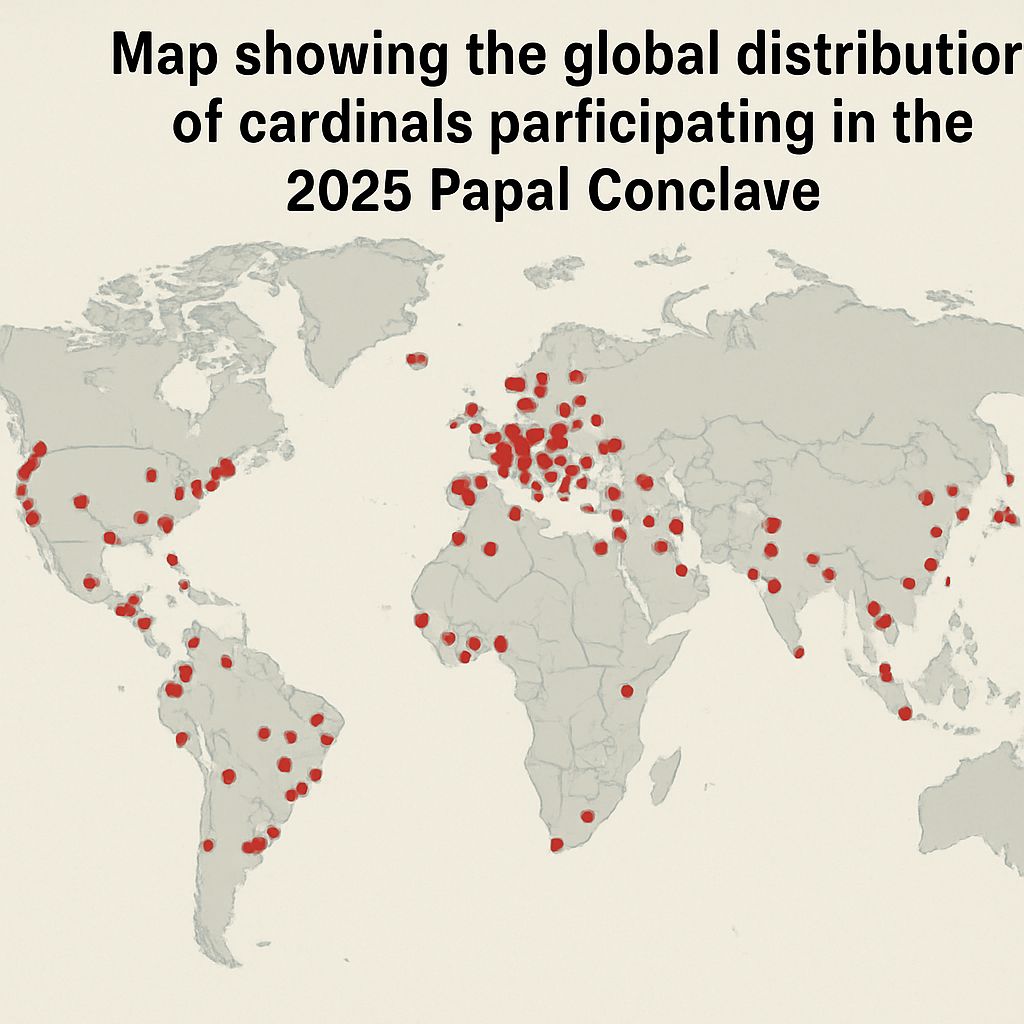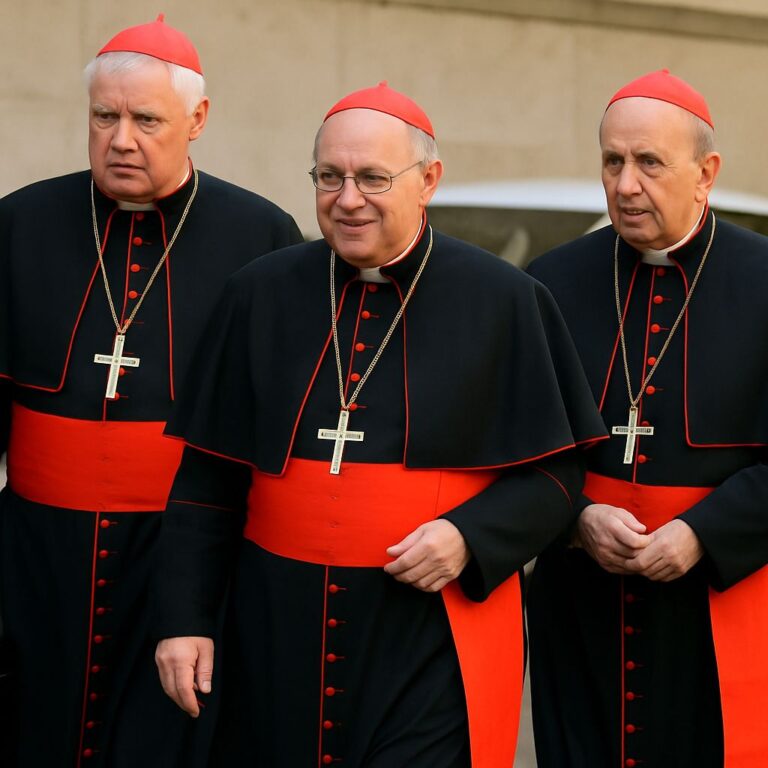2025 Papal Conclave: A Historic Turning Point for the Catholic Church
Introduction: What Will the 2025 Papal Conclave Reveal?
Have you ever wondered how the next spiritual leader of over 1.3 billion Catholics is chosen? The 2025 Papal Conclave isn’t just a secretive ritual—it’s a pivotal decision that could shape the moral and spiritual compass of the world.
Is this something you want to search the entire internet for, analyze it, and separate it from everyone else? Well, we already did the hard work!
After analyzing everything across the internet and gathering real-world insights, the Bhussan.com team shares this friendly, helpful article.
What Is the Papal Conclave?🏩
The word conclave comes from Latin, meaning “with a key.” This describes how the cardinals are locked inside the Sistine Chapel during voting—cut off from the world.
Key Features of the 2025 Papal Conclave:
-
✅ 133 Cardinal-Electors under age 80
-
✅ Held inside the Sistine Chapel, Vatican City
-
✅ Requires a two-thirds majority (89 votes)
-
✅ Secrecy is paramount—no phones, devices, or communication allowed
This ancient system ensures spiritual discernment and removes outside political pressures.

Why Is There a Conclave in 2025?
The 2025 Papal Conclave follows the passing of Pope Francis in April 2025 at the age of 88. His papacy will be remembered for social justice reforms, outreach to the poor, environmental advocacy, and more.
Francis’ death created a spiritual void, and now 133 cardinals will gather to discern who should lead the Church into the future.
What made Pope Francis unique?
-
First Jesuit Pope
-
First from the Americas
-
Championed inclusion, climate activism, and transparency

📆 How Is a New Pope Elected? (Step-by-Step)
Here’s how the 2025 Papal Conclave works:
-
Mass “Pro Eligendo Pontifice” kicks off the conclave.
-
Oaths of secrecy are taken by all cardinal-electors.
-
Cardinals are locked inside the Sistine Chapel.
-
Voting occurs twice in the morning and twice in the afternoon.
-
Ballots are burned after each round—white smoke indicates a successful election.
-
Once elected, the cardinal accepts the role and chooses a papal name.
-
The new pope appears on St. Peter’s Balcony and says: Habemus Papam!

The Most Diverse Conclave Ever
The 2025 Papal Conclave includes cardinals from six continents. Check out this breakdown:
| Region | Cardinal Electors |
|---|---|
| Europe | 50 |
| Latin America | 23 |
| Africa | 20 |
| Asia | 17 |
| North America | 15 |
| Oceania | 8 |
Over 80% of these electors were appointed by Pope Francis, meaning his influence looms large over the outcome.
Who Are the Frontrunners? (Top Papabili)
Here are five top contenders for the papacy:
1. Cardinal Pietro Parolin (Italy)
-
Vatican’s top diplomat
-
Could maintain Francis’ diplomatic priorities
2. Cardinal Luis Antonio Tagle (Philippines)
-
Known as “The Asian Francis”
-
Strong contender for first Asian pope
3. Cardinal Pierbattista Pizzaballa (Italy)
-
Patriarch of Jerusalem
-
Deep interfaith and conflict-zone experience
4. Cardinal Fridolin Ambongo (Congo)
-
Voice for African Catholics
-
Focuses on ecology and economic injustice
5. Cardinal Peter Erdő (Hungary)
-
Conservative theologian
-
Could lead to a doctrinal revival

The Challenges Facing the Next Pope
The newly elected pope will inherit a Church facing:
-
⚡ Polarization between liberal and conservative wings
-
✍ Sexual abuse accountability demands
-
⛩ Rising influence of the Global South
-
⛪ Interfaith cooperation opportunities
-
☘ Ecological and migration crises
He must bridge divisions while leading 1.3 billion Catholics in an increasingly secular world.
Timeline: Modern Conclaves Compared
| Year | Pope Elected | Duration | Context |
|---|---|---|---|
| 2005 | Benedict XVI | 2 days | After the death of John Paul II |
| 2013 | Pope Francis | 2 days | After the resignation of Benedict XVI |
| 2025 | TBD | TBD | First post-death conclave in 22 yrs |
Pros & Cons of the 2025 Papal Conclave
| Pros | Cons |
|---|---|
| Promotes tradition and continuity | Seen as outdated by secular standards |
| Ensures global Church representation | Lack of transparency in the vote |
| Potential for new global leadership | May deepen internal ideological rifts |
Frequently Asked Questions (FAQs) about the 2025 Papal Conclave
1. What is a Papal Conclave?
A Papal Conclave is a secret meeting of cardinals who are responsible for electing a new pope after the death or resignation of the current one. The word “conclave” comes from the Latin “cum clavis”, meaning “with a key,” as the cardinals are locked in the Sistine Chapel until a new pope is elected.
2. Why is the 2025 Papal Conclave so important?
The 2025 Papal Conclave is significant because it will determine the direction of the Catholic Church in the coming years, especially following the passing of Pope Francis. His papacy has seen transformative changes, and the new pope’s leadership will shape the future of the Church globally.
3. How are the cardinals selected for the Conclave?
Cardinals who are under the age of 80 are eligible to vote in the conclave. They are appointed by the pope, and typically, the cardinals represent a variety of countries and regions to ensure global representation in the election process.
4. How many cardinals are involved in the 2025 Conclave?
For the 2025 Papal Conclave, there are 133 cardinals who are eligible to vote, all of whom were appointed by Pope Francis during his papacy.
5. What happens during the Papal Conclave?
The conclave begins with a mass, followed by the cardinals taking an oath of secrecy. They then vote multiple times, with ballots being burned after each session. White smoke from the Sistine Chapel chimney signals that a new pope has been chosen.
6. What is the role of the cardinals in the Conclave?
The cardinals are responsible for electing the new pope. Their role is to choose someone they believe will lead the Church effectively, spiritually, and morally. They also act as spiritual leaders, ensuring that the election is conducted with reverence and integrity.
7. What does the term “Habemus Papam” mean?
When a new pope is elected, the announcement made from the balcony of St. Peter’s Basilica is “Habemus Papam,” which translates to “We have a pope.” This marks the end of the conclave and the beginning of the new pope’s reign.
8. How long does the conclave last?
The length of the conclave can vary. It typically lasts between two and five days. If a pope is not elected after several votes, the cardinals will continue voting until a decision is made.
9. Why is the Papal Conclave held in the Sistine Chapel?
The Sistine Chapel is chosen because it is the traditional site for papal elections. It provides a sacred, isolated environment where cardinals can deliberate and vote free from outside influence.
10. What is the role of the Holy Spirit in the election of a pope?
Many Catholics believe that the Holy Spirit guides the cardinals in their decision-making process, ensuring that the election results in the right choice for the Church. This belief underscores the solemnity and spirituality of the conclave.
11. How is the next pope chosen?
The next pope is chosen when a cardinal receives a two-thirds majority of votes from the cardinals. Once elected, the cardinal accepts the position and chooses a papal name.
12. What is the significance of the smoke from the Sistine Chapel?
After each vote, the ballots are burned. If the election is successful, the smoke is white, signaling to the public that a new pope has been chosen. If no decision is made, the smoke is black.
13. Can the cardinals communicate during the conclave?
No, the cardinals are forbidden from communicating with the outside world during the conclave. All phones and devices are confiscated, ensuring secrecy and focus on the election process.
14. What happens if a pope is not elected after several rounds of voting?
If a pope is not elected, the cardinals continue to vote in subsequent rounds until one cardinal receives a two-thirds majority vote. This process continues until the conclave concludes with a decision.
15. Why are cardinals chosen from around the world?
Cardinals are selected from all over the world to ensure that the Catholic Church remains inclusive and representative of its global followers. This diversity in the cardinals’ ranks allows for a more balanced approach to papal leadership.
16. Who is likely to be elected as pope in 2025?
While it is hard to predict, several top contenders (papabili) are seen as strong candidates. Some of the frontrunners include Cardinal Pietro Parolin, Cardinal Luis Antonio Tagle, and Cardinal Fridolin Ambongo, among others.
17. How often does a Papal Conclave occur?
A Papal Conclave is held when a pope dies or resigns. The most recent conclave occurred in 2013 when Pope Benedict XVI resigned. The next conclave will take place in 2025 following the death of Pope Francis.
18. Why do cardinals take an oath of secrecy?
The oath of secrecy is meant to ensure that the election process remains confidential. It prevents any external pressures or influence on the cardinals’ decision-making.
19. What role does the Vatican play in the conclave?
The Vatican serves as the home for the conclave, providing the setting and administrative support necessary for the election process. The Sistine Chapel, located in Vatican City, is where the voting occurs.
20. Is there any public access to the conclave?
No, the conclave is completely private. Only the cardinals are allowed inside the Sistine Chapel, and no media or public observers are allowed to witness the voting.
21. Can the Pope be elected from outside the College of Cardinals?
Technically, a pope can be chosen from outside the College of Cardinals, but this has never happened in modern history. The tradition is to elect a cardinal as pope.
22. What happens to the pope’s duties after the election?
Once elected, the new pope assumes the role immediately and is responsible for leading the Catholic Church, guiding its teachings, and overseeing its global operations.
23. What’s the importance of the papal name?
The name chosen by the new pope often reflects his vision for his papacy or honors a past pope or saint. For example, Pope Francis chose his name after St. Francis of Assisi to symbolize humility and a commitment to the poor.
24. How does the Catholic Church prepare for a conclave?
Preparation includes organizing the cardinals, ensuring all logistics for the conclave are in place, and preparing the Sistine Chapel. The Church also provides guidance on the spiritual nature of the election process.
25. What does a pope do after being elected?
After being elected, the pope is introduced to the world from the balcony of St. Peter’s Basilica, where he gives his first blessing. He begins his papacy by addressing key issues such as Church governance and moral teachings.
26. What does the Catholic Church hope for in a new pope?
The Catholic Church hopes that the new pope will lead with compassion, uphold Church teachings, foster unity, and guide the faithful through complex global issues such as poverty, climate change, and interfaith dialogue.
27. How does the global community view the papal election?
The papal election is closely watched by people worldwide, especially Catholics. Many see it as a crucial moment in shaping the future of the Church, as well as influencing global moral and spiritual leadership.
28. What are the major challenges the next pope will face?
The next pope will face challenges such as rising secularism, the sexual abuse crisis, theological debates, global poverty, and climate change. He will need to address these issues while guiding 1.3 billion Catholics.
29. What happens after the conclave ends?
After a new pope is elected, he will be formally introduced to the public from the balcony of St. Peter’s Basilica. His first blessing and public appearance mark the beginning of his papacy.
30. How can I follow the 2025 Papal Conclave live?
You can follow the 2025 Papal Conclave via Vatican News, live broadcasts on major news networks, and the official Vatican website. The iconic white smoke will signal when the new pope is elected, followed by his public announcement.
External Resources & References
Conclusion
The 2025 Papal Conclave will define the Church’s spiritual direction for decades. Will it lean toward continuity or radical change? Global inclusion or European tradition? Only time—and the Holy Spirit—will tell.
Until then, all eyes turn to the Sistine Chapel, where smoke will signal the world’s next shepherd.
Stay tuned. The world is waiting.
-
Link to Related Articles:
-
“Learn more about the role of the Pope and Church history in our Pope’s Role Explained.”
-
“Interested in Vatican politics? Check out Vatican Governance and How It Works.”
-
-
Link to the Process of Elections in the Church:
-
“Want to dive deeper into Church elections? Read our detailed guide on How Church Leaders Are Chosen.”
-
-
Link to Related Controversies:
-
“You can explore the Church’s response to challenges in our article Catholic Church and Sexual Abuse Scandals.”
-
-
Connect to Church History:
-
“For more context, explore the History of the Papacy.”
-
-
Link to Relevant Religious Topics:
-
“Read about Pope Francis’ groundbreaking initiatives in our article on Pope Francis’ Social Reforms.”
-
-
Link to Other Global Religious Events:
-
“Stay updated on worldwide religious events by reading Major Religious Events of 2025.”
-

